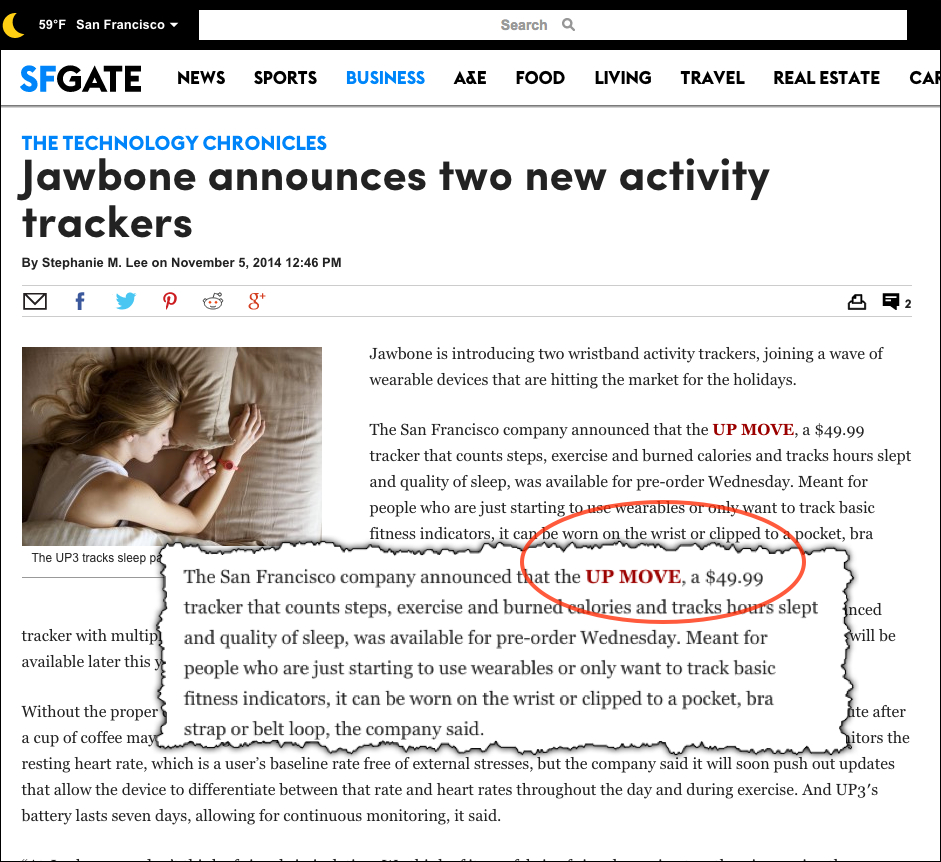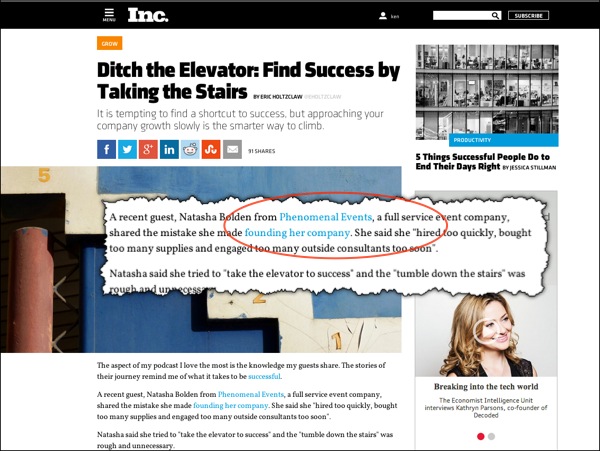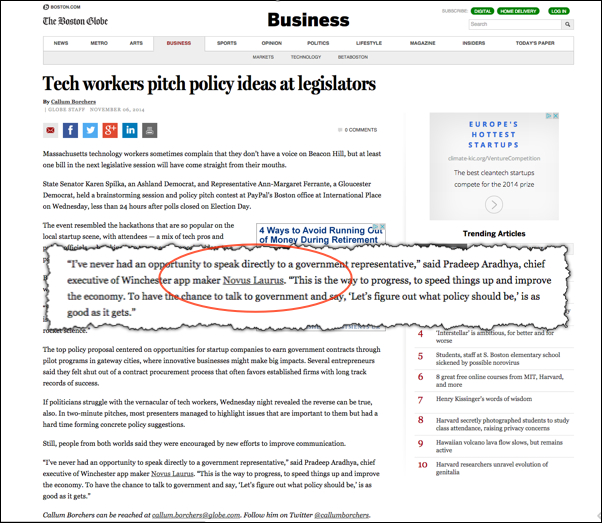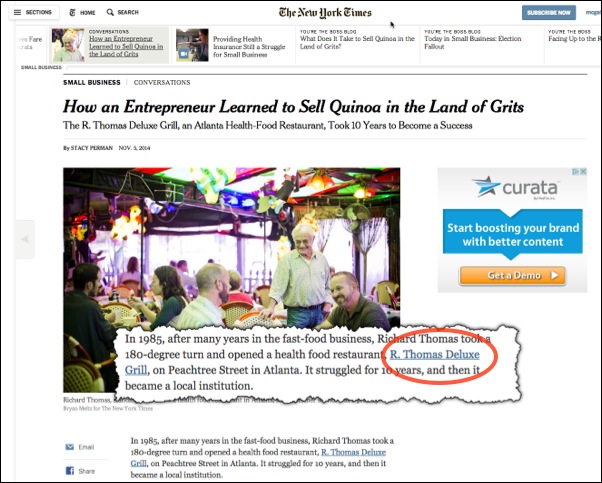
This is a post from our new Director of PR Services, Ken McGaffin. You can follow him on Twitter here, and (virtually) meet him in our 11/20 PR Brainstorm Webinar.
Every day businesses of every size get media coverage and valuable editorial links – but many SEOs and link builders don’t quite know how to approach the media to get this type of coverage. It takes much more than just sending out a press release – it takes effort and hard work. But the opportunity is very real and the good news is that link builders will already have many of the skills they need.
In this article, I want to explore the benefits of online PR and the editorial links it can bring. And I’ll set the scene for the PR Brainstorming Webinar that I’ll be doing with Garrett French.
Archetypal Stories
Spend time reading newspapers, browsing news sites and other media outlets and you’ll quickly see that news stories follow patterns – there can be a lot of similarity in the structure of stories that come from very different industries.
I’ll call them archetypal stories – or typical stories. These are stories that journalists know their readers and their editors will like. Journalists find it easy to write such stories because they’re so familiar with the type and format.
Get to know these archetypes, use them to pitch your story, and you’ll increase the chances of your story being covered.
To illustrate, I’ve pulled out some archetypal stories from today’s news. You can read about them below, or watch the video I created for this post here:
Today’s news (and editorial links)
I’m writing this post on November 5th and to illustrate the very real nature of this opportunity, I wanted to pick out only news stories that were published today. I had a number of criteria – each news story I’ve mentioned had to:
- feature a small business
- include a live editorial link to the featured business
- represent a different archetypal story
In about 30 minutes of searching I came up with six examples.
- New product rides a wave
- Entrepreneur shares mistakes
- Journalist tries out new product
- Positive example of legislative policy
- Business owner represents a specific demographic
- Local hero makes good.
Here are the stories I found, together with a screenshot of the editorial link.
1. New product rides a wave
In this type of story, the journalist picks on a recent wave of interest, adds new examples or gives a fresh perspective on the ‘wave’. You can see this story in The San Francisco Chronicle, Jawbone announces new activity trackers by Stephanie M. Lee:
The article reports that San Francisco company, Jawbone is introducing two wristband trackers “that are joining a wave of wearable devices that are hitting the market for the holidays”.
2. Entrepreneur shares mistakes
Other people’s mistakes make for great reading. Not only do we admire the courage of people who admit their mistakes, we find them almost irresistible because of our natural curiosity and of course, the promise of us getting some lessons that will help us avoid the same mistake.
In this story, Ditch the Elevator: Find Success by Taking the Stairs, Eric Holtzclaw tells the story of Natasha Bolden and how she “hired too quickly, bought too many supplies and engaged too many outside consultants too soon” for her events company, Phenomenal Events.
3. Journalist tries out new product
In this type of story, the journalist has free rein to try, explore and report on new products. And they’ll often come up with intriguing questions, as in this article on CNN Money Does text therapy actually work? by Sara Ashley O’Brien.
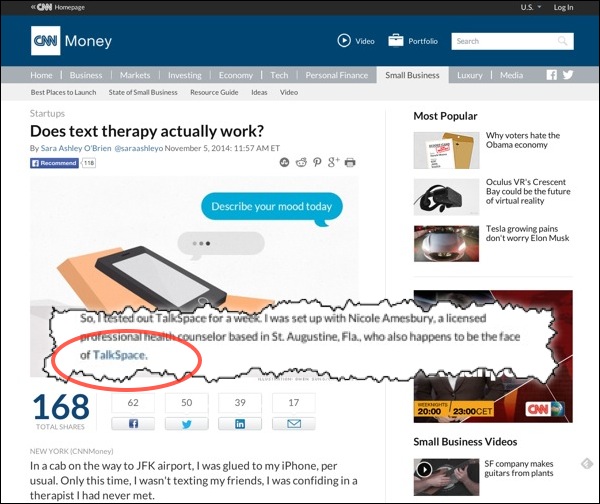
The journalist gives a wonderful introduction that really invites readers to dig deeper:
“In a cab on the way to JFK airport, I was glued to my iPhone, per usual. Only this time, I wasn’t texting my friends, I was confiding in a therapist I had never met.”
The story features TalkSpace, a digital therapy provider – and gives an intriguing insight into how the service works.
4. Positive example of legislative policy
Legislative policies present journalists with a couple of problems – first they have a duty to report them and second, they can make very dull reading. No one really wants to listen to a politician drone on about their latest policy – what readers want to know is what it means to them.
And one of the best ways to do this is to dig out real examples. This has two benefits – it makes much more interesting copy for the media outlet AND it serves the politician better because it makes their policy much clearer to their audience.
Callum Borchers, writing in the Boston Globe article, Tech workers pitch policy ideas at legislators makes a great example of this type of news writing.
In the article Pradeep Aradhya of Novus Laurus, gives tangible support to legislators:
“This is the way to progress, to speed things up and improve the economy”.
5. Business owner represents a specific demographic
For a journalists, this approach can give a fresh approach to what would otherwise be an unremarkable story. Kitty Dann writing in The Guardian, a UK newspaper with a powerful global reach tells a tale of professional sports people who have gone to create new careers as entrepreneurs in On your marks: the entrepreneurs with a background in professional sport.
This type of story has to include multiple examples and journalists will spend time researching and compiling them. This is where they’ll inevitably search on Google – and if you come up in the results, there’s a good chance of being covered.
6. Local hero makes good
My final example takes a local example. Written by Stacy Perman, How an Entrepreneur Learned to Sell Quinoa in the Land of Grits, tells the story of Richard Thomas whose health food restaurant struggled for 10 years before becoming a local institution.
This article is pitched as a local story – but it could also be described as another archetypal story, the “Entrepreneur’s Journey”. So one business can fit multiple archetypes – but that’s something we’ll go into in future posts.
The Switch Technique
I’ve given six archetypal collected from today’s news in about 30 minutes. There are of course, many more than six archetypes. However, they each provide a model of how you should think about coverage for your own business or website.
So follow these steps:
- read the media you’d like to be featured in every day
- describe the archetype of media stories you come across
- think how you could apply that archetype to your own situation
- if it’s a good fit, write it up and start approaching likely journalists.
Start your own collection of archetypal stories, milk them for inspiration, and you’ll be creating much more powerful media stories in no time.
Benefits for the link builder
Editorial coverage does not happen by accident but it is increasingly important for SEOs and link builders. The effort is worthwhile because of the many benefits it brings.
- Media coverage, mentions and editorial links are trusted by Google because they’ve gone through a journalist, an editor and even a fact checker – so what they contain is likely to be accurate.
- Editorial links bring direct click through traffic, and even ‘mentions’ of your brand or product can trigger internet searches to find out more. This can lead to direct sales of your product or services.
- Get coverage in a trusted industry publication and you get immediate bragging rights and can write, “As featured on [insert media outlet]”
- You’ll also benefit from the ‘cascade effect’ – other journalists and bloggers frequently write about other stories they’ve read online – this can bring you considerable ‘bonus’ coverage and links.
- Once you’ve gained media coverage, more journalists see you as potential for further stories. In other words because one journalist has already trusted you, they too can trust you as a good source.
The Biggest PR Mistake
So what’s the biggest mistake companies new to PR can make? Simple, they don’t have a plan so each effort they make is ‘reactive’ and so only has a small chance of success.
But companies with a plan, know what they have to do and their concerted efforts over time is what brings results. PR planning ensures that over time you will get consistent valuable results.
What would you like a journalist to say about your business?
Perhaps one of the first steps in considering online PR is to have a vision of what you’d like a journalist to say or write about you. So I’ll be guesting on a PR Brainstorm with Garrett where we hope to encourage you to have that vision.
I’ll be talking more about PR planning and will more stories taken directly for the day’s news.
Garrett will be putting me on the spot and asking me to provide practical advice so your business can make the most of online PR. I’m really looking forward to it!
